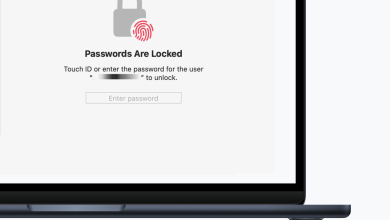How to Fix ‘Apple cannot check it for malicious software’ Error?
When attempting to install an application on a Mac, if you encounter a prompt warning about malicious software, it is due to a security feature of macOS. This feature requires that all applications must be signed with a certificate and notarized by Apple, a process in which the application is submitted to Apple to confirm the absence of malicious code.
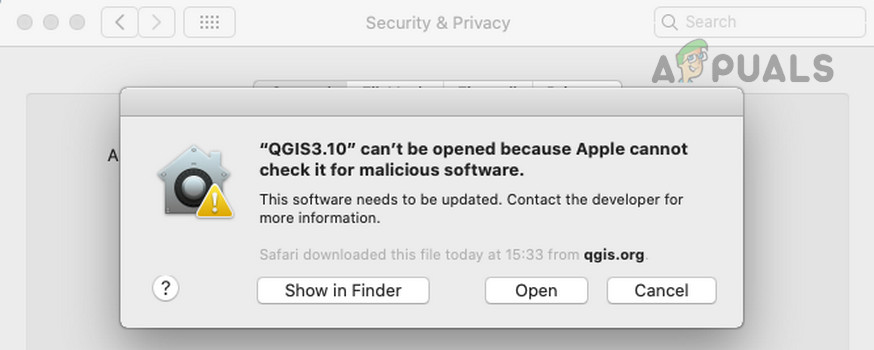
This issue often exacerbates when legitimate, well-known applications trigger the malicious software prompt. Users have reported this issue across various versions of macOS with many popular applications, such as Office 365 and Adobe Illustrator, as well as with apps compiled by developers themselves.
The prompt can appear during installation or when opening an application post-installation. Occasionally, an action such as printing may trigger the warning. It is also possible to encounter this warning spontaneously, a situation typically indicative of adware presence.
If you encounter this issue with a Mac provided by your company, ensure the company permits the installation of the application in question.
Warning: Always confirm the legitimacy and security of applications, particularly when bypassing system warnings. Do not compromise the security of your system for convenience.
1. Open the Application by Right-clicking on it
To override the security warning, right-click and select ‘Open’.
- Click Show in Finder on the warning pop-up, then right-click the application file.
- Hold down the Control key and select Open.
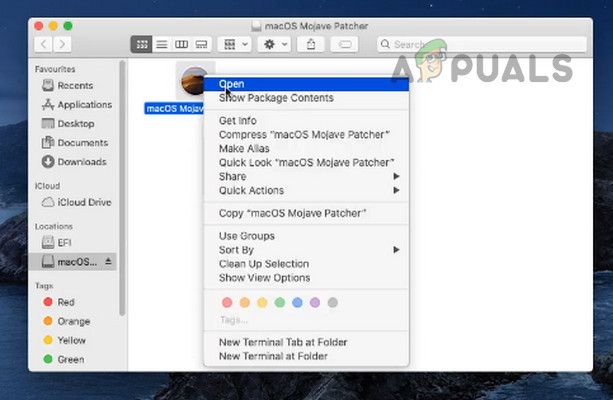
Open the Application by Right-clicking on it - Confirm opening the application to add an exception in the Mac’s security settings, allowing future launches via double-clicking the application. Verify if the issue has been resolved.
- If the problem persists, press the Option key and right-click the application file.
- Choose Open and see if the application launches successfully.
2. Drag the Application File to the Applications Folder
Moving the application to the Applications folder can resolve launching issues.
- Find the application file and drag it into the Applications folder.
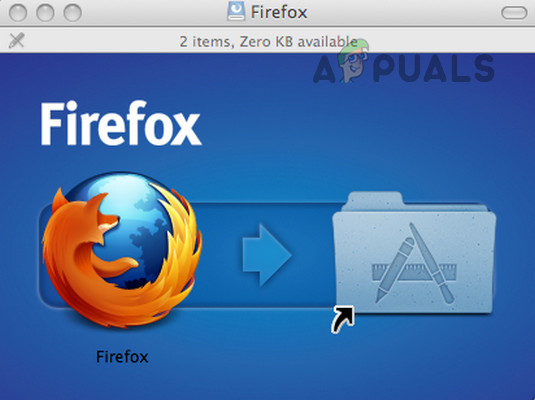
Drag and Drop Firefox to the Mac’s Applications Folder - Right-click on the application within the Applications folder and control-click Open.
- If prompted, confirm to launch the application and check if the issue is fixed.
3. Install from the Mac’s Desktop
Installing from the desktop can address permission issues, but is not guaranteed to resolve security warnings.
- Move the application file to the desktop.
- Right-click the file and choose Open.
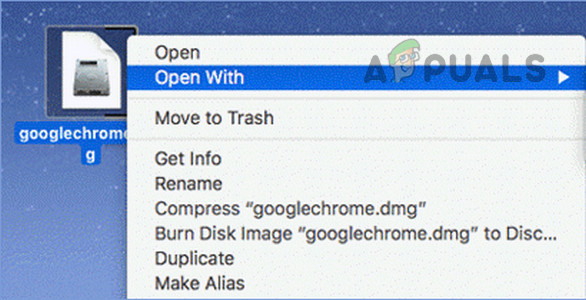
Install the Application from the Mac’s Desktop - Confirm opening the file and ascertain if the issue is still occurring.
- If the problem persists, control-click the file on the desktop to see if it operates correctly.
4. Enable the ‘App Store and Identified Developers’ Option
Having a Mac set to only allow installations from the App Store can result in a malicious software warning when installing from an identified developer. Activating the option for ‘App Store and Identified Developers’ can resolve this.
- Navigate to System Settings > Security & Privacy > General.
- Click the Lock icon and enter the admin username and password.
- Select App Store and Identified Developers.
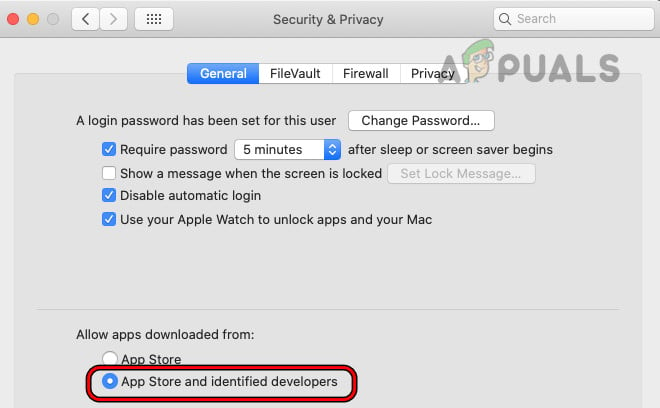
Select the Option of App Store and Identified Developers on the Mac - After restarting the Mac, try launching or installing the application again to see if the problem has been corrected.
- Alternatively, find the DMG file and right-click it.
- Choose Open With, then select Installer.
- A message may appear similar to the malicious software warning, but with an Open or Continue option included.
- Click on Open or Continue in the warning message to see if the issue is resolved.
5. Use the ‘Open Anyway’ Option
MacOS provides a built-in ‘Open Anyway’ option for applications not recognized as from a Mac identified developer or when authentication fails.
- Access System Settings > Security & Privacy > General.
- Click the Lock icon at the bottom and input administrator details.
- Choose Open Anyway for the problematic app to ascertain if this addresses the issue.
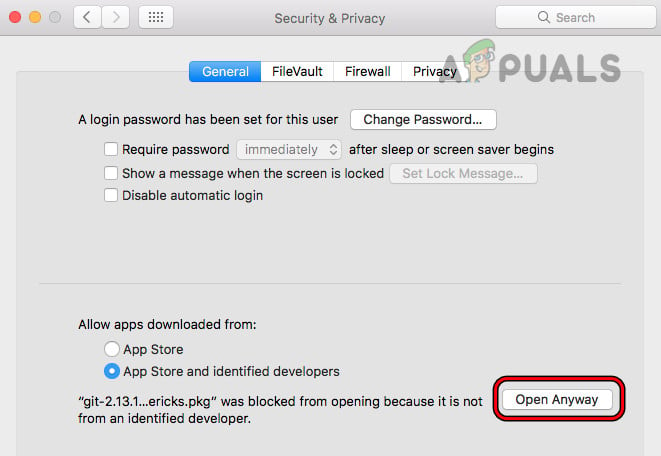
Click on Open Anyway for the Problematic Application in the General Tab of the Mac’s Security & Privacy Settings - If the option isn’t visible, return to the folder where the application is located, attempt to open it, and if the warning arises, retry the aforementioned steps.
6. Download the Latest Application Installer
Outdated installers may not be compatible with recent MacOS versions, causing installation issues. Using the most recent installer ensures compatibility and may solve the problem.
For Adobe CC:
- Open a web browser and visit the OEM website, such as Adobe’s.
- Navigate to the appropriate product page and download it. Use your license information if required for access to the latest installer.

Download the Latest App Installer from the OEM Website - Proceed with the installation and check if it completes without issue.
7. Update macOS and other Applications from the same Developer
An outdated macOS or applications from the same developer may cause compatibility issues. Updating both your operating system and existing apps can address these concerns.
Update the Other Apps
- Look for any installed OEM applications and update them. For instance, if using Adobe XD, go to the menu and select Help > Updates. Apply available updates.
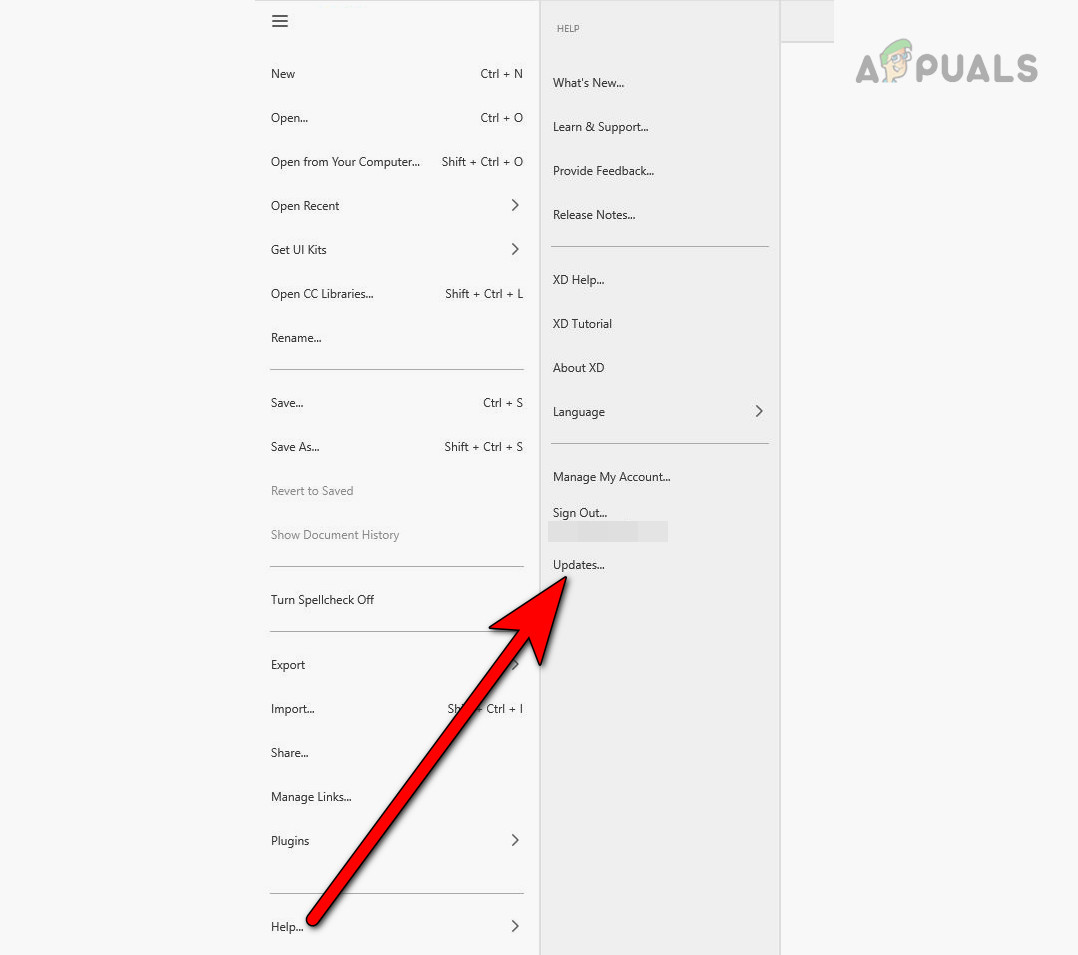
Check for Adobe XD Updates - Restart your Mac, then install the desired application and verify whether the installation completes successfully.
Update the macOS
- Head to System Settings > General > Software Update.
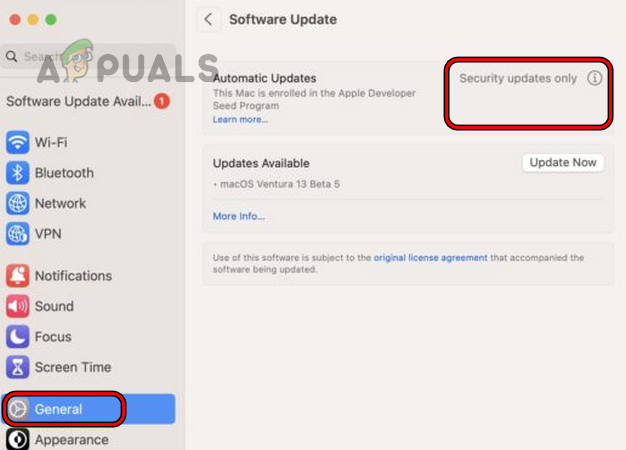
Check for macOS Updates - Install any pending updates, restart your Mac, and attempt the application installation to see if the warning persists.
8. Reinstall the already installed Application
If issues occur during application launch or usage, a corrupted installation may be to blame. In such cases, reinstalling the application often rectifies the issue.
To reinstall a printer on a Mac:
- Go to System Settings > Print & Scan.
- Select the problematic printer and click the minus symbol to remove it.
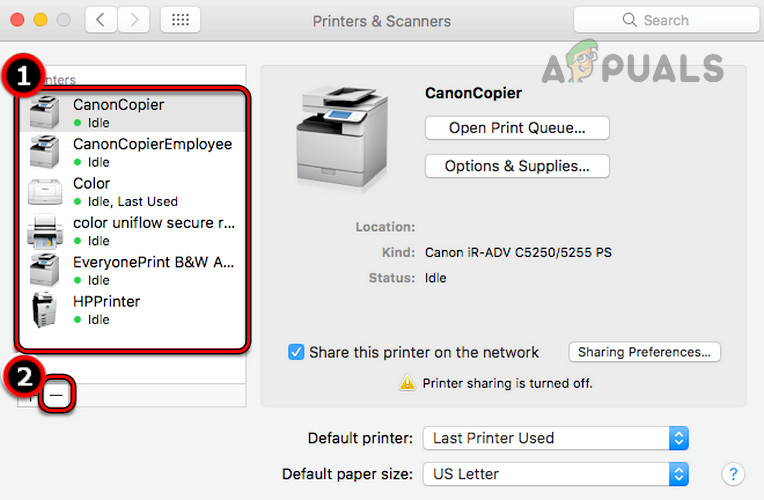
Remove the Printer from the Mac - Open Finder and navigate to Library > Printers > PPDs > Contents > Resources.
- Move the driver file for the problematic printer to the Trash.
- Empty the Trash and restart your Mac.
- Re-add and configure the printer along with its drivers. Check for resolution of the issue.
9. Use the Pacifist Utility
Pacifist is a utility for managing DMG application package files, which you can also use to install troublesome apps. Exercise this method only with trusted sources.
- Download and install Pacifist utility. The utility offers a demo mode that does not require purchase.
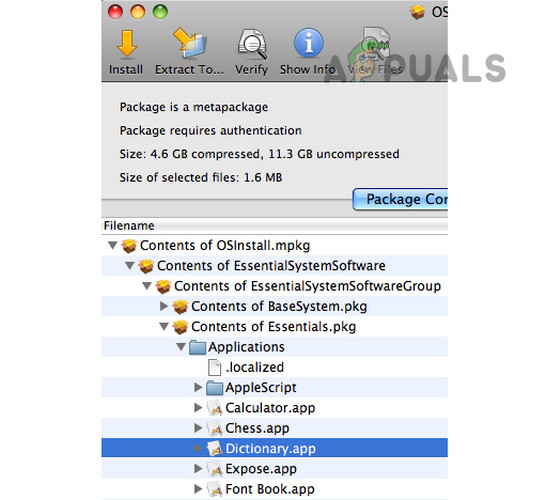
Use the Pacifist Utility to Install the Problematic Application - Run Pacifist, browse for the application, select it, and click on Install. Confirm if the issue has been resolved.
10. Delete the Files of an Adware
Adware on a Mac might create a launch agent, which causes malicious software prompts upon loading. In such cases, eradicating the adware files will resolve the problem.
Exercise caution and only delete files you’re sure are associated with adware or malware. Investigate the nature of each file online to ensure its legitimacy before removal.
- Run Etrecheck to scan your system, using the additional text button if necessary.
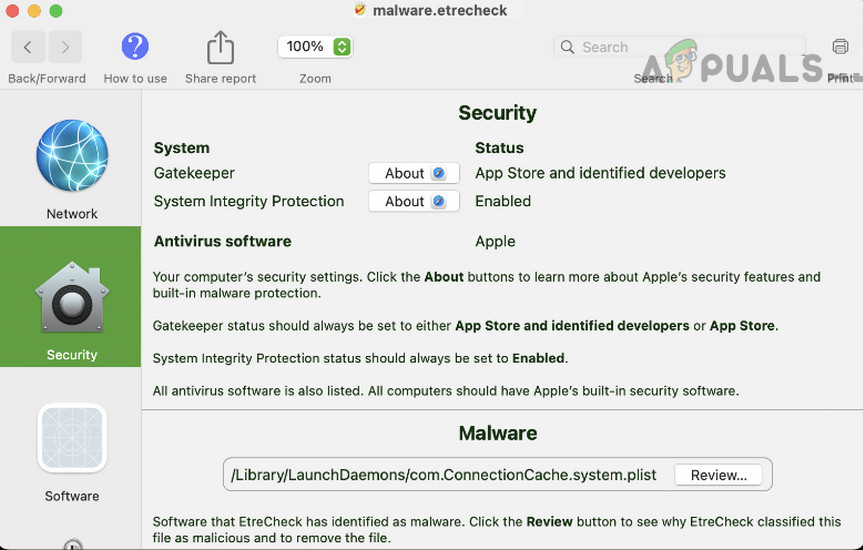
Remove the Files in the Security Tab of Etrecheck - Examine the logs for any suspicious activity.
- Remove any problematic files from the Etrecheck Security page. Problematic files may be located or named as follows (ignore files you cannot delete):
Launchd: /Library/LaunchDaemons/com.fluviatic.plist Executable: /etc/fluviatic.sh Reason: Adware pattern match Launchd: /Library/LaunchDaemons/com.apple.nomaro.plist Executable: /Library/nomaro Reason: Adware pattern match Launchd: /Library/LaunchDaemons/com.brothelry.net-preferences.plist Executable: /etc/change_net_settings.sh Reason: Adware pattern match Launchd: /Library/LaunchDaemons/com.cytoid.plist Executable: /etc/cytoid.sh Reason: Adware pattern match Launchd: /Library/LaunchDaemons/com.apple.ightem.plist Executable: /Library/ightem Reason: Adware pattern match Launchd: /Library/LaunchDaemons/com.handily.service.plist Executable: /etc/run_app.sh Reason: Adware pattern match Launchd: /Library/LaunchDaemons/com.embraceor.service.plist Executable: /etc/run_app.sh Reason: Adware pattern match Unsigned Files: Launchd: ~/Library/LaunchAgents/com.JMGti.plist Executable: ~/Library/qeSGc/0iGb1 Details: Domain name invalid - possibly adware Launchd: /Library/LaunchAgents/com.Ben.plist Executable: /Library/laciniated/FpvUIfsO/BezAOVjO/Ben Launchd: ~/Library/LaunchAgents/com.ReplayInfo.plist Executable: ~/Library/Application Support/com.ReplayInfo/ReplayInfo Details: Domain name invalid - possibly adware Launchd: ~/Library/LaunchAgents/com.outsting-nanomelus.plist Executable: ~/Library/caphar/CvjZdHjk/PFaVhNLb/jYKnVsvw/outsting-nanomelus Details: Domain name invalid - possibly adware Running app: /Library/unbenignant/unbenignant Running app: /Library/udandan/udandan.app/Contents/MacOS/udandan Running app: /Library/bagel-snatchable/sgHbeBUR/QBbJfEMQ/tyRvfkGJ/apsis Running app: /Library/wlaghmyrnqvj/wlaghmyrnqvj Running app: /Library/mPGDlnMj/mPGDlnMj Login Item: ~/bin/helper_update
- Reboot the Mac and create another EtreCheck report.
- Review for any suspicious files, remove them, and continue this process until no questionable files remain. Check again to see if the problem is solved.
11. Use Terminal Commands
At this point, if unresolved, we can try Terminal commands to address the issue.
Delete the Quarantine Extended Attribute
- Open Terminal and enter the following, substituting with the actual file paths:
xattr -d com.apple.quarantine /path/to/file

Remove the Quarantine Attribute from the Application on the Mac - Check if the application now installs without problems.
- If not, execute these commands after providing actual file paths:
xattr /path/to/MyApp.app sudo xattr -r -d com.apple.quarantine /path/to/MyApp.app
- In case the issue continues, apply the following, while making sure to replace placeholder paths with the actual ones:
xattr -r -d com.apple.quarantine /path/to/directory/containing/the/binaries/*
Code Sign the Application
- Launch Terminal and change to the /bin directory.
- Execute the following command, replacing MyApp with your actual application’s name:
sudo codesign --force --deep --sign - /Applications/MyApp.app

Use the Codesign to Sign the Application on the Mac - Restart the Mac and check for correct installation of the application.
Disable the GateKeeper
- Open Terminal and execute the following command:
sudo spctl --master-disable

Disable the Mac’s GateKeeper - Reboot the Mac and try installing the application again.
- Should it fail, move to System Settings > Security & Privacy > General.
- Click the Lock icon and provide user credentials.
- Adjust Allow Apps Downloaded from to Anywhere and restart the Mac.
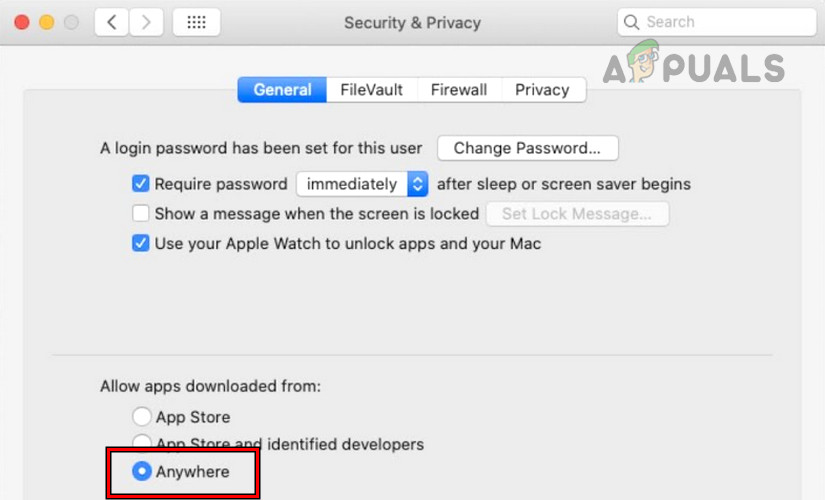
- Attempt to install the application once more, and this step should resolve the issue. If you wish to re-enable GateKeeper afterward, simply enter the following command in Terminal:
sudo spctl --master-enable
If the problem persists even after trying all the above solutions, consider booting your Mac into safe mode to determine if that resolves the issue. Also, review your start-up items, and if you have antivirus software installed, consider disabling or uninstalling it. Another option is to create a new admin user account and attempt to install the application through it.
Should these measures fail to fix the problem, a system reset or a reinstallation of macOS might be in order. If difficulties continue, contacting Apple Support or the application’s vendor for assistance is advisable.




